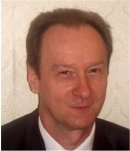|
Plenary
Lecture
Swarm Intelligence Algorithms Parameter Tuning

Professor Milan Tuba
University Megatrend Belgrade
Faculty of Computer Science
Serbia
E-mail:
tuba@ieee.org
Abstract: Most real-life problems can be represented
as some kind of optimization problem. Easy optimization
problems were solved long time ago so nowadays only hard
problems are of research interest. Many discrete
(combinatorial) as well as some continuous optimization
problems are intractable, but of great practical
interest. Traveling salesman problem (TSP) is a classic
example that was researched for the longest period of
time and because of that is often used as a benchmark.
The main problem with hard optimization problems is that
there is enormous number of suboptimal solutions or
local minima and there is no guidance how to search.
Standard down-hill methods in this situation fail.
Typical example of such function that is used as a
benchmark is Rastrigin function that is a sphere
modified by small cosine waves.
The oldest way to deal with such problems is Monte-Carlo
method. It is equivalent of trying to find the deepest
point in the oceans by measuring many times the depth at
random locations and hoping that best measurement will
be close to the global optimum. While Monte-Carlo method
is usable for some applications, its blind search is not
sufficient for many others. In this rather hopeless
situation researchers turned from mathematically exact
methods to belief. The nature is doing miraculous
things. We know the results but we do not understand the
mechanism. For hard optimization problems we try to
mimic some nature processes. Older attempts included
simulation of evolution (through genetic modifications
and survival of the fittest) and simulated annealing.
Recently, swarm intelligence become prominent using the
fact that extremely simple individuals exhibit
miraculous collective intelligence. Examples include
ants colonies, honey bees colonies, flocks of birds,
schools of fish etc.
These nature inspired metaheuristics simulate various
natural phenomena. We talk about bee colony food finding
or ant colony path finding, but in essence, in all these
diverse mimicking we do two things. We exploit good
found solutions, but also go to unknown places in order
to avoid being trapped in local minima. The
successfulness of any such algorithm is determined by
proper balance between exploitation and exploration.
This balance is maintained by adjusting certain
parameters and also by applying some rules in certain
situations. By doing such adjustments algorithm can
become much better for some class of problems (off
course, according to NFL theorem, it cannot become
universally good for all problems). This plenary lecture
will demonstrate few successful examples of such
adjustments.
Brief Biography of the Speaker:
Milan Tuba received B. S. in Mathematics, M. S. in
Mathematics, M. S. in Computer Science, M. Ph. in
Computer Science, Ph. D. in Computer Science from
University of Belgrade and New York University. From
1983 to 1994 he was in the U.S.A. first as a graduate
student and teaching and research assistant at
Vanderbilt University in Nashville and Courant Institute
of Mathematical Sciences, New York University and later
as an Assistant Professor of Electrical Engineering at
Cooper Union Graduate School of Engineering, New York.
During that time he was the founder and director of
Microprocessor Lab and VLSI Lab, leader of scientific
projects and supervisor of many theses. From 1994 he was
Assistant professor of Computer Science and Director of
Computer Center at University of Belgrade, from 2001
Associate Professor, Faculty of Mathematics, and from
2004 also a Professor of Computer Science and Dean of
the College of Computer Science, Megatrend University
Belgrade. He was teaching more than 20 graduate and
undergraduate courses, from VLSI Design and Computer
Architecture to Computer Networks, Operating Systems,
Image Processing, Calculus and Queuing Theory. His
research interest includes mathematical, queuing theory
and heuristic optimizations applied to computer
networks, image processing and combinatorial problems.
He is the author of more than 130 scientific papers and
a monograph. He is coeditor or member of the editorial
board or scientific committee of number of scientific
journals and conferences. Member of the ACM since 1983,
IEEE 1984, New York Academy of Sciences 1987, AMS 1995,
SIAM 2009. Participated in many WSEAS Conferences with
plenary lectures and articles in Proceedings and
Transactions.
|
